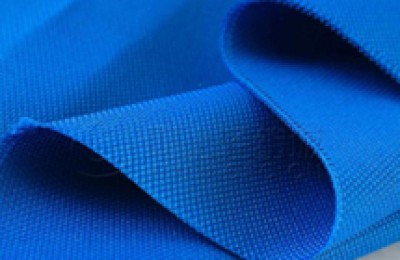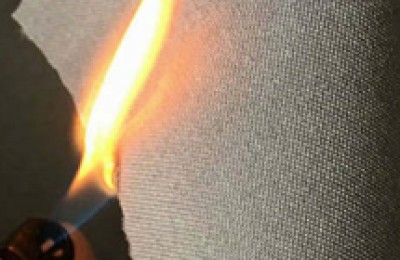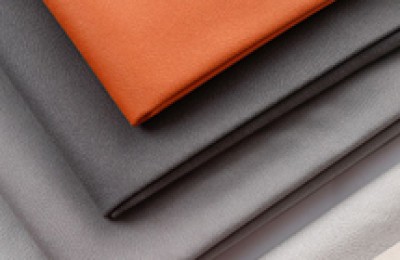1. Filament
In the manufacturing process of synthetic fibers, the length of the spinning fluid (melt or solution) obtained after spinning and post-processing Fibers measured in kilometers are called filaments. Filament includes monofilament, multifilament and cord yarn.
(1) Monofilament
Originally refers to a continuous single fiber spun with a single-hole spinneret, but in practical applications it often also includes 3-6 single fibers spun from 3-6 hole spinnerets. . Thick synthetic fiber monofilaments (0.08-2mm in diameter) are called bristle filaments and are used to make ropes, brushes, daily mesh bags, fishing nets or industrial filter cloths; thinner polyamide monofilaments are used to make transparent women’s clothing. Socks or other high-end knitwear.
(2)Multifilament
A thread composed of dozens of single fibers. The multifilament of chemical fiber is generally composed of 8 to 100 single fibers. The vast majority of clothing fabrics are woven with multifilament yarns because multifilament yarns composed of multiple single fibers are more flexible than single yarns of the same diameter.
(3) Cord yarn
A filament strip composed of more than one hundred to several hundred single fibers used to make tire cord fabric, commonly known as cord yarn.
2. Short fibers
Chemical fiber products are cut into lengths of several centimeters to more than ten centimeters, and fibers of this length are called short fibers. According to different cutting lengths, short fibers can be divided into cotton short fibers, wool short fibers, and medium-long short fibers.
(1) Cotton short fiber
The length is 25~38mm, and the fiber is thin (linear density is 1.3~1.7dtex), similar to cotton fiber. It is mainly used for blending with cotton fiber, such as blending cotton-type polyester short fiber with cotton fiber to obtain a fabric. Called “polyester” fabric.
(2) Wool type short fiber
The length is 70~150mm, the fiber is thick (linear density 3.3~7.7dtex), similar to wool, and is mainly used for blending with wool. For example, wool-type polyester short fiber is blended with wool. The resulting fabric is called “wool polyester” “Fabric.
(3) Medium-long fiber
The length is 51~76mm, the thickness of the fiber is between cotton type and wool type (linear density is 2.2~3.3dtex), and it is mainly used for weaving medium and long fiber fabrics.
In addition to being blended with natural fibers, short fibers can also be blended with short fibers of other chemical fibers. The resulting blended fabric has good overall properties. In addition, short fibers can also be spun pure. In the current production of chemical fibers around the world, the output of short fibers is higher than that of filaments. According to fiber characteristics, some varieties (such as nylon) mainly produce filaments; some varieties (such as acrylic) mainly produce short fibers; and some varieties (such as polyester) have a relatively close ratio of the two.
3. Thick and detailed wires
Thick and detailed yarn is referred to as T&T yarn. From its appearance, you can see the alternating thick and detailed parts. After dyeing, you can see the alternating dark and light color changes. Thick and thin filaments are manufactured using uneven drafting technology after spinning. The difference in properties of the two resulting filaments can be controlled during production. Their distribution is irregular and in a natural state.
The thick part of the thick and thin filament has low strength, long elongation at break, strong heat shrinkage, good dyeability, and is easy to be processed by alkali reduction. It can be developed by taking full advantage of these characteristics. Textiles with unique properties. The physical properties of thick and fine filaments are related to factors such as the diameter ratio of thick and fine filaments. Generally, thick and thin filaments have high breaking elongation and boiling water shrinkage and low breaking strength and yield. Its strong shrinkage property can mix thick and fine filaments with other filaments to form different shrinkage mixed filaments. In addition, problems such as the easy deformation and low strength of thick sections of thick filaments should be paid attention to during the weaving, dyeing and finishing processes. The initial thick and thin filaments were round wires. With the development of thick and thin filaments production technology, some special thick and fine filaments appeared one after another, such as special-shaped thick and fine filaments, mixed fiber thick and thin filaments, micro-porous thick and fine filaments, and fine-denier coarse filaments. Detail yarns, etc., which may have special feel and style, or have special absorbency, are mostly used to develop high-end fabrics.
4. Textured yarn
Textured yarns include all silk and yarns that have undergone texturing processing, such as elastic yarns and bulked yarns.
(1) Elastic yarn
That is, deformed filament, which can be divided into two types: high elasticity yarn and low elasticity yarn. Elastic yarn has good stretchability and fluffiness, and its fabric is close to wool, silk or cotton fabrics in terms of thickness, weight, opacity, coverage and appearance characteristics. Polyester elastic yarn is mostly used for clothing, nylon elastic yarn is suitable for producing socks, and polypropylene elastic yarn is mostly used for household fabrics and carpets. The main deformation methods include false twisting method, air injection method, hot air injection method, stuffing box method and shaping method.
(2) Textured yarn
That is to use the thermoplasticity of polymer compounds to mix two synthetic fiber tops with different shrinkage properties in proportion. After heat treatment, the high-shrinkage top forces the low-shrinkage top to curl, making the mixed top stretchable and fluffy. It becomes a deformed yarn similar to wool. At present, acrylic bulked yarn has the largest output and is used to make knitted outerwear, underwear, wool, blankets, etc.
5. Differentiated fibers
Differentiated fibers are imported�Higher than ordinary fibers, and the acquisition and application of these properties are often related to high-tech fields such as aerospace, aircraft, marine, medicine, military, optical fiber communications, bioengineering, robots and large-scale integrated circuits. Therefore, high-performance fibers are also called High-tech fibers.
High-performance fibers are usually distinguished according to their special properties, such as high strength and high modulus, high adsorption, high Various fiber materials such as elasticity, high temperature resistance and flame retardant, light conduction, electricity conduction, efficient separation, radiation protection, reverse osmosis, corrosion resistance, medical and pharmaceutical fiber. High-performance fibers are mainly used in the manufacture of industrial textiles, but some of them can also be used to develop decorative textiles and clothing textiles, and the performance of these two types of textiles can be significantly improved.
12. Nanofiber
Fibers with a diameter less than 100nm are usually called nanofibers (1nm is equal to 10m, that is, 10μm, which is only the length of 10 hydrogen atoms lined up). At present, some people have also added Fibers filled with nanoscale (i.e. particle size less than 100nm) powder fillers are called nanofibers.
At present, the thinnest nanofibers are single carbon atom chains. This kind of carbon nanotubes is known as one of the nanomaterials. Wang, the reason is that this material, which is so thin that it is difficult to observe with ordinary instruments, has magical abilities: ultra-high strength, ultra-flexibility, and strange magnetism. Because the distance between carbon atoms in carbon nanotubes is short and the tube diameter is small, the fiber structure is less likely to have defects. Its strength is 100 times that of steel and 200 times that of ordinary fibers, while its density is only 1/6 of steel. A rope made of it can be pulled from the earth to the moon without being broken by its own weight. It has strange electrical conductivity, with both metal conductivity and semiconductor properties. Even different parts of a carbon nanotube can show different conductivities due to structural changes. Using it to make rectifiers can replace silicon chips, which will cause major changes in electronics and make computers extremely small. Nanodevices made of carbon nanotubes can be used to assemble nanorobots, such as mosquito planes and ant tanks, which can be used in military and medical applications. Carbon nanotubes can be used to make hydrogen storage materials and develop hydrogen into a clean energy source for human services. In addition, carbon nanotubes can also be used as stealth materials, catalyst carriers and electrode materials. Nanofibers can support the arrangement of “nano machines” and connect the integrated array of “nano machines” into large-scale systems.
When the fineness of most materials reaches the nanometer level, their physical and chemical properties show unconventional properties, such as:
(1) Surface effect
The smaller the particle size, the larger the surface area. Since the surface particles lack the coordination of adjacent atoms, the increase in surface energy is extremely unstable. It is easy to combine with other atoms, showing Strong activity. After the fineness of the fiber reaches the nanometer level, the relationship between its diameter, specific length and specific surface area is shown in the table below.
As can be seen from the above table, when the fiber diameter is 100nm, the specific surface area is more than 30 times that of a diameter of 10μm, while the ratio when the diameter is 1μm The surface area is only 10 times the diameter of 10μm.
(2) Small size effect
When the size of the particles is small enough to be similar to or smaller than the wavelength of the light wave, the de Broglie wavelength of the conduction electron, and the coherence length or transmission depth of the superconducting state , its periodic boundary conditions will be destroyed, and the acoustic, optical, electromagnetic, thermodynamic and other properties of the particles will change, such as lowering the melting point, color separation and discoloration, absorbing ultraviolet rays, shielding electromagnetic waves, etc.
(3) Quantum size effect
When the size of the particle is small to a certain value, the electron energy level near the Fermi level changes from quasi-continuous to discrete energy level. At this time, the electron that was originally a conductor Substances may become insulators, and substances that were originally insulators may become superconductors.
(4) Macroscopic quantum tunneling effect
The tunnel effect means that tiny particles can pass through an object under certain circumstances, as if there is a tunnel inside.
The manufacturing of nanofibers can be roughly divided into three categories: molecular technology preparation methods, spinning preparation methods, and biological preparation methods. </p








